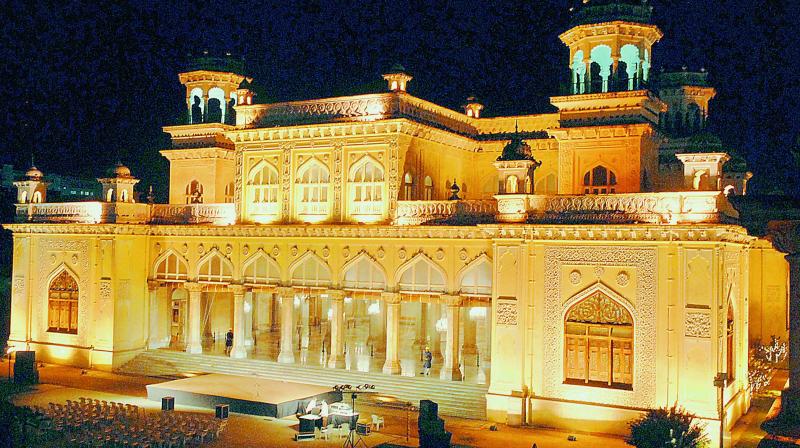Chowmahalla is Wakf Board property
It excluded all fixtures and fittings known as Khilwat Mubarak along with a portion of land.

Hyderabad: The abode of the Nizams of Hyderabad, Chowmahalla Palace, one of the finest royal residences in India, is actually a registered Wakf Board property. Mukarram Jah Bahadur, grandson of the last Nizam Mir Osman Ali Khan endowed it to the Wakf Board in 1975.
Interestingly, the Wakf Board was not aware of the endowment till it found the relevant papers in a file recently. It is now looking for additional documents.
The Wakf Board confirmed that Chowmahalla Palace, also known as Khilwat Mubarak, was endowed in 1975 and registered as its property.
Wakf Board chairman Mohammed Saleem expressed astonishment about the ignorance of the Wakf Board officials that they did not know about the endowment.
Mr Saleem said he has referred the matter of tracking additional documents and seeking legal opinion on registering them to Chief Executive Officer Shahnawaz Khasim
The Wakf deed is very intricate and the officials are trying to understand it, sources said. The documents submitted by the naib mutawalli state that Mukarram Jah had dedicated a portion of his immovable property to the Wakf Board.
It excluded all fixtures and fittings known as Khilwat Mubarak along with a portion of land.
The fixtures, furniture, fittings and other historical and decorative articles have been given to the Board only as a loan. The palace was given to the Wakf Board on the condition that the Board would propagate Islamic culture and historical education of Hyderabad and the Asaf Jahi dynasty.
According to the documents, Mukkaram Jah had orally endowed the palace on 15th of Zilhaj 1394 Hijri or December 30, 1974. The documentation with witnesses Khair-uddin Ali Khan and Abdul Qaiyum was carried out on January 18, 1975.
The written declaration had specific instructions for three naib mutawallis for the administration of the ‘Khilwat Mubarak Wakf’.
Mukkaram Jah constituted himself as the first mutawalli and reserved the power of nomination of his successor mutawalli and appointment of temporary naib mutawallis to carry on the administration of the Wakf.
Pursuant to this, he appointed Mohd Asadullah Khan, Nawab Habeeb Jung Bahadur and Captain Syed Mohd Mehdi Razvi as naib mutawallis to whom he handed over a plan of the immoveable property given to the Wakf Board.
Mukkaram Jah in a specific instruction said, ‘The Khilwat Mubarak had been the Coronation Hall of the Asaf Jahi Dynasty and is of distinctive value. It should be properly decorated in a befitting manner and the public should be permitted to see and view the place. The old banners of the Asaf Jahi dynasty, Mahi Maratib (insignia) and other standards and orders, including the dresses, regalias of courtiers should also be displayed.’ There is an interesting point in the order that has put the Wakf Board in a spot. The order states that the ‘fixture, fittings and other historical and decorative articles have been given as a loan’. These include the chandeliers, artifacts and many other interesting objects which are on display in the palace. The order stated that this was to give people an idea of Islamic culture and in particular the Asaf Jahi dynasty.
The role of the Wakf Board is that of a governing body and officials stated that every mutawalli has to comply with the Wakf Act. The role of the mutawalli is to prepare the budget, keep regular accounts and audit the accounts with the Wakf Board annually. The mutawalli is to be paid Rs 5,000 annually or the net annual income derived by the Board not exceeding seven per cent.
The Wakf officials are now debating whether the registration of documents create legal complexities. Mukkaram Jah according to the documents has given only immovable property, excluding all fixtures and fittings, which means that the latter do not belong to the Board and are given on loan. How to deal with this is the question.

